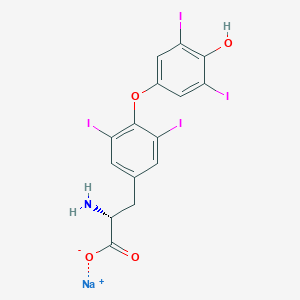Fudan University has discovered the neural mechanisms of morphine reward
-
Last Update: 2021-02-27
-
Source: Internet
-
Author: User
Search more information of high quality chemicals, good prices and reliable suppliers, visit
www.echemi.com
A new study by Professor Malan of Fudan University's School of Brain Sciences has found that morphine can work together to activate two different types of intermediate neurons in the cerebral cortical layer, causing the continuous inactivation of inhibitory neural circuits, revealing the neural mechanisms by which addictive drugs such as morphine produce strong rewards and dependence.
July
, the study was published online in the journal Nature, Molecular Psychiatry (
).
, such as morphine, have good analgesic effects, but they also have a strong reward effect (pleasure), which can lead to addiction and even abuse. Studies have shown that opioids such as morphine work by activating opioids on the cell surface. Most neurons in the brain are excitable neurons. Previous studies have shown that opioid administration causes long-term changes in the morphology and functional plasticity of excitable neurons, which are considered to be the basis of their pharmacological effects and addiction. However, there are also intermediate neurons in the cerebral cortical layer, although only a small part of the number of neurons, but the inhibitory synaptic transmission mediated plays a key role in regulating excitable synaptic transmission and loop integration, and its abnormal function will lead to mental illness.
Malan team study found that morphine activates m-opioids on intermediate neurons of PV, directly weakens inhibition of excitable neurons, and also enhances the inhibition of PV neurons by activating d-opioids on SST intermediate neurons, further weakening PV's inhibition of excitable neurons. This study reveals for the first time that morphine, by acting on different opioid subjects on two intermediate neurons, co-regulates inhibitory microre loops, weakening the inhibitory input of excitable neurons in the pre-edge cerebral cortical layer in a direct and indirect manner, causing them to continue to inhibit, thus producing an unusually strong reward mechanism and providing new ideas for the development of low-addictive opioid analgesic drugs.
the study was funded by the Ministry of Science and Technology's 973 Project "The Formation and Elimination of Memory of Psychoactive Substance Addiction", the National Natural Science Foundation of China's key projects and major research program integration projects. Jiang Changyou, a 2019 doctoral student at Fudan University's Institute of Brain Sciences, is the first author of the paper, and Professor Ma Lan of Fudan University's Institute of Brain Sciences and Professor Wang Feifei of the School of Basic Medicine are co-authors of the paper.
relevant paper information:
This article is an English version of an article which is originally in the Chinese language on echemi.com and is provided for information purposes only.
This website makes no representation or warranty of any kind, either expressed or implied, as to the accuracy, completeness ownership or reliability of
the article or any translations thereof. If you have any concerns or complaints relating to the article, please send an email, providing a detailed
description of the concern or complaint, to
service@echemi.com. A staff member will contact you within 5 working days. Once verified, infringing content
will be removed immediately.







